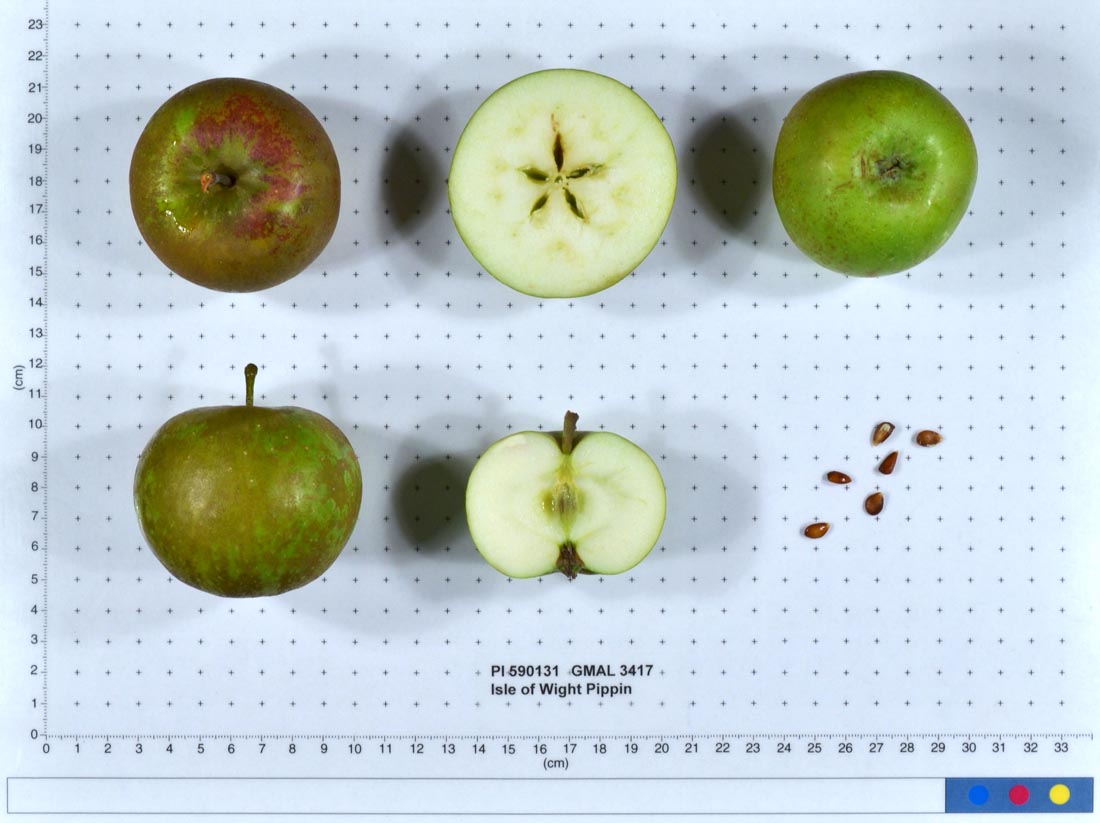Pomiferous
Welcome to the world's most extensive apples (pommes) database.
Information on over 7,000 apples is available here, all carefully researched and provided in a way that is easy to navigate.
Isle of Wight Pippin (North American)

type: Cider, Dessert, Eating
synonyms: Isle of Wight Orange, Isle of Wight Golden Pippin, Marigold, Marigold Pippin, Orange, Orange Pippin (not to be confused with Cox’s Orange Pippin ).
summary: Two varieties exist under the name Isle of Wight Pippin; one which originated in the Normandy region of France some time during the 1700s. The other arose in the eastern United States, possibly during the early 1800s.
identification: Small, round. The skin is golden yellow or pale orange with patches of rough russet, sometimes an orange flush on sun-exposed surfaces.. The skin feels greasy and rough. The stem is very short and set in a shallow cavity.
characteristics: The flesh is white with greenish tinges, firm. Juicy and mildly sweet-sharp and aromatic.
uses: Considered a fine eating apple, but it was used primarily for making cider.
origins: Listed in Volume 1 of Alexander McDonald's 1807 printing of "A Complete Dictionary of Practical Gardening" with the terse description "a handsome middle sized apple, of greenish-yellow colour." However, the apple likely pre-dates this listing. "This is a very old variety," wrote British pomologist Robert Hogg in the 1851 edition of "British Pomology." "According to Mr. Knight, it is by some supposed to have been introduced from Normandy (France) to the Isle of Wight (U.K.), where it was first planted in the garden at Wrexall Cottage, near the Undercliff, where it was growing in 1817." Its introduction to the British Isles likely occurred well before this date since the Isle of Wight Pippin is listed as the flower parent for the Downton Pippin , which was first exhibited in 1806. There seem to be no record of the Isle of Wight Pippin's parentage or origins.
cultivation: Weak vigor, growing a somewhat small tree. Well suited to trellis training. Bears good crops annually.
progeny: Downton Pippin
cold storage: Keeps up to four months.
vulnerabilities: Very resistant to canker and mildew.
harvest: Ready for harvest starting in the middle of the fifth period. Leave on the tree as long as possible for the best flavours.
pollination group: B
pollination peak: 4
ploidism: Diploid. Self sterile.
cold storage weeks: 16
harvest period: 5
sg: 1.074
Donate a cider?
©2016-2021 Pomiferous.com. All rights reserved